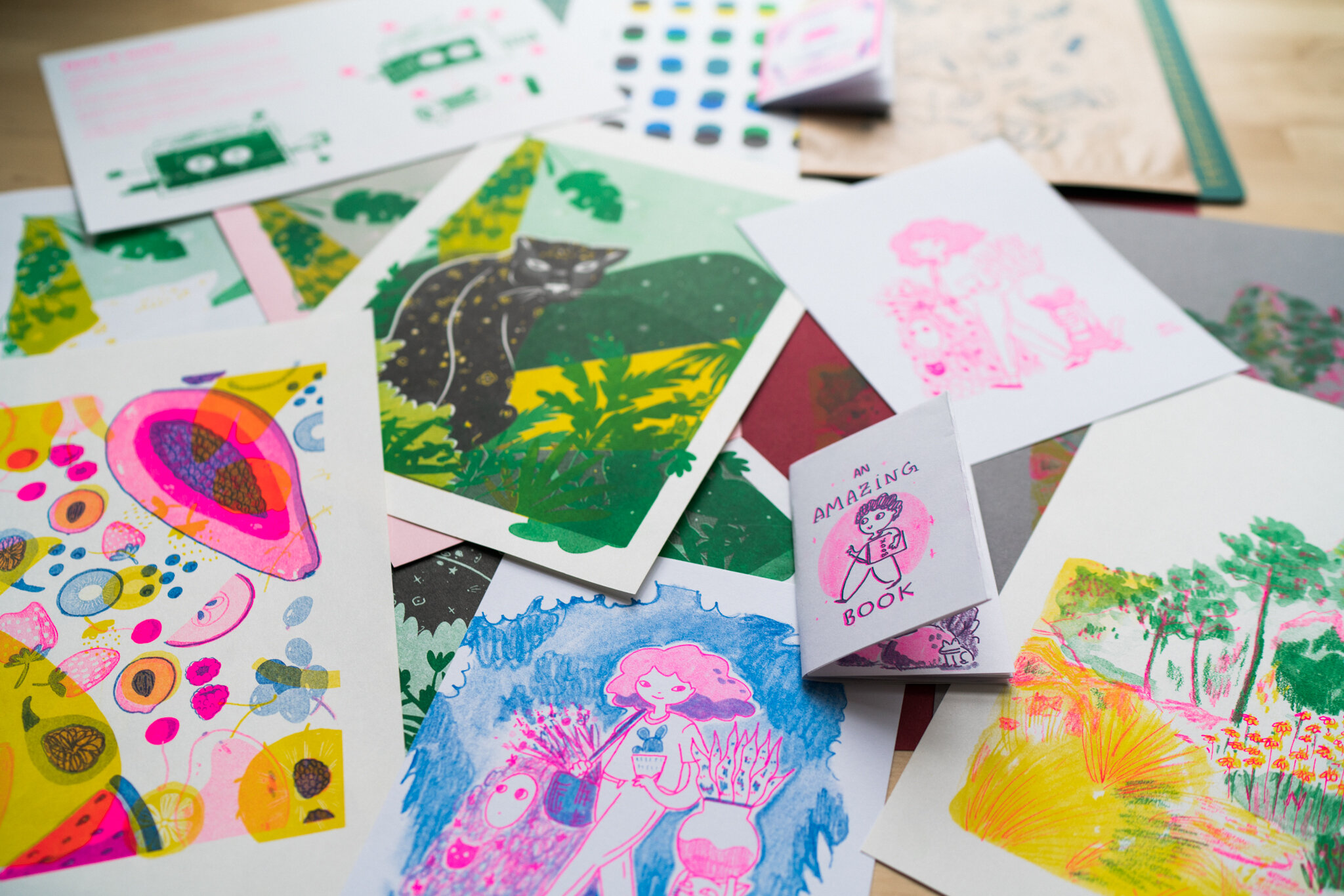Riso Pop is a small risograph studio in Amsterdam run by Aafke Mertens.
What's a Risograph?
Risograph printing is a technique best described as a ‘digital screen printing’. The process is similar to screen printing, but with the convenience of an office copier. It’s known for its vivid colours (that other printers can’t produce) and its specific textures. These machines deliver ‘perfect imperfections’ and provide a cheap and easy method for reproducing work at large quantities, like posters, prints and zines.
A brief look into history
RISO is the name of both a printer and ink company from Japan. Noboru Hayama started his company in post-war Japan (in 1946), calling it RISO. The risograph and the development of soy-based ink, was a response to the expensive import on emulsion ink following the end of World War II. The name RISO means ‘ideal’ in Japanese, a poetic name that Hayama chose as he found it important that people should not lose their ideals during this period of despair.
How does RISO work?
When you scan or upload an image to the machine, it first makes a paper stencil and wraps this around the ink drum - these are called masters.
Paper is placed on the feeder and passed through one or two of the ink drums.
The machine creates a ‘digital’ stamp of individual colours (which are incredibly vibrant!) and together they create a colorful image.
Why is RISO interesting?
Any type of printing technique is like a puzzle - you need to think about what you are doing and how. You need to work in layers and with a limited amount of colours, this pushes you to experiment, embrace unexpected outcomes and try out new things.
The RISO, even though being a digital machine, does not guarantee perfection, which makes each piece unique. It doesn’t always do what you expect, but the more you use it the better you understand this machine. Are you ready for a challenge?



